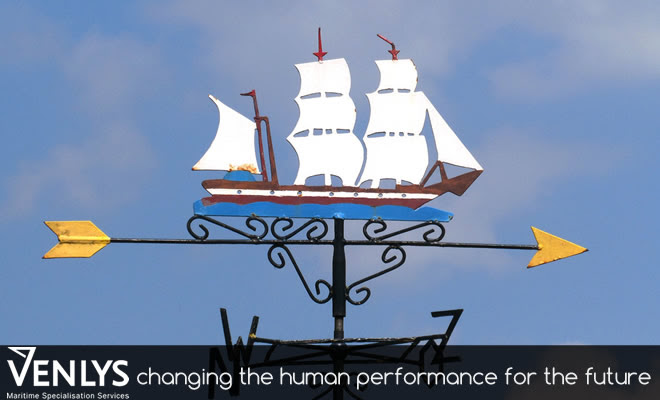Get to know the human factors – Moving from Situational Awareness to Decision Making – 02/2022

Editorial
by Katerina Skourtanioti
Managing Director
Dear All,
We are delighted to continue the communication campaign titled
“GET TO KNOW THE HUMAN FACTORS” with a targeted article on Decision Making.
As previously discussed, every article will be disseminated to our clients and the maritime community. You can also find it on our website to download for any further publication. Once more, our goal is to promote the role and capabilities of the human element, the most valuable asset within our industry.

| GET TO KNOW THE HUMAN FACTORS |
Moving from Situational Awareness to decision Making
by
VENLYS Maritime Specialisation Services
OPENING :
“Human factors refer to environmental, organisational and job factors, and human and individual characteristics, which influence behaviour at work in a way which can affect health and safety”.
Situational Awareness and Decision Making, two essential skills for Safety Leaders
One of the most notable failures in Decision Making leading to multiple fatalities, was the Chernobyl incident (1986). The nuclear plant control room operators decided to keep on testing a generator even though it was common knowledge that the reactor’s power level was low.
“Nous” is a Greek word for “mind” or “intellect”, but nobody really knows what it actually is. A decent approach would be to describe “nous” as the sum of cognitive skills that include consciousness, awareness, thought, judgment, and memory.
We gather information from the world around us with all five sensory systems: vision, sound, touch, smell and taste. All that information is unconsciously stored in our memory. When a situation arises, we are instantly retrieving information stored in our memory (related to the new piece of information) and try to make sense of what it means to us now. What comes next is calculating what is most likely to happen in the immediate future. This is to ensure that we make a calculated decision that will allow us to handle the heightened situation in the most successful way possible.
Around sixty percent of the time of the times that a person will make the wrong decision, which will likely lead to an unwanted event, is attributed to not being able to gather the information in the first place. So, a collision at sea or grounding would most likely happen because of a lost piece of information on behalf of the bridge officer and their team, i.e. failure to scan or observe the area. Each one of us has a certain amount of capacity for picking up new information and maintaining mental awareness of it, which can change depending on the conditions.
But what is Decision Making anyway?
The process of reaching a judgment or choosing an option (sometimes called a course of action) to meet the needs of a given situation is called Decision Making and this is maybe one of the most important skill of a Leader. Different techniques may be used depending on circumstances. The conditions may vary in relation to time pressure, task demands, feasibility of options and the level of constraint, along with the support and resource the decision maker has at their disposal.
Decision Making is affected by factors including stress, fatigue, noise, distraction and interruption. This is why is extremely important to come up with effective training methods. We all like to exchange “war stories” with each other, in corridors, coffee rooms, during or after work. People learn by sharing experiences like these. Story-telling helps us understand situations and teaches us lessons which we can use going forward.
So, how do we make decisions under conditions of high uncertainty, inadequate information, shifting goals, high time pressure and risk, while working with a team and subject to organisational constraints?
Maritime work can be high-stress and high-pressure. Emergency situations can even lead to panic and other states of mind that could prevent decision-making.
From a group perspective, establishing a shared view of the operations and situation is crucial, as is creating an atmosphere that encourages clear communication and open sharing of information or reporting.
As an individual, training and protocols can help improve decision-making.
CLOSURE:
Effective Decision Making is achieved by monitoring the situation, assessing the state of events, and proceeding with appropriate actions and re-evaluating the results. There are different methods for choosing a way to proceed but in some situations, doing nothing or waiting to see what happens may be the optimal course of action.
Effective leaders do not make a great many decisions. They concentrate on what is important. What is important based on their highest level of conceptual understanding.
Effective leaders encourage crew members to be honest about stress, fatigue and other factors that may impact their decision-making, which can help prevent further mistakes from occurring.
They want to know what the decision is all about and what the underlying realities are which it has to be satisfied. They want impact rather than technique. And they want to be sound rather than clever.





